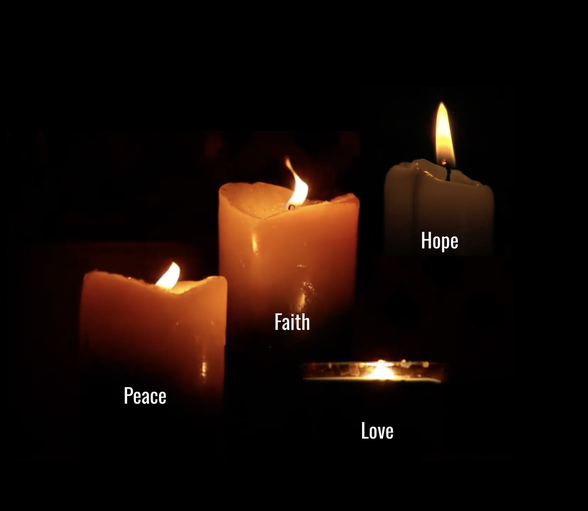INTRODUCTION
While the theologian Jürgen Moltmann proposes that hope is the "call to stand up against death face to face until it is swallowed up in victory," the Buddhist teacher Joan Halifax invites us to ground ourselves in "wise hope" - a kind of hope that is not a passive observer of life's suffering, but rather a type of hope that is active - one that embraces uncertainty of the present and, at the same time, responds and acts. If so, then perhaps hope is the act of fanning the dying embers. It is the act of lighting up once more the fire within, especially when the dark begins to overwhelm whatever faint light is left.
While the theologian Jürgen Moltmann proposes that hope is the "call to stand up against death face to face until it is swallowed up in victory," the Buddhist teacher Joan Halifax invites us to ground ourselves in "wise hope" - a kind of hope that is not a passive observer of life's suffering, but rather a type of hope that is active - one that embraces uncertainty of the present and, at the same time, responds and acts. If so, then perhaps hope is the act of fanning the dying embers. It is the act of lighting up once more the fire within, especially when the dark begins to overwhelm whatever faint light is left.

The Four Candles
(author unknown; source from this Webpage)
Once upon a time, four candles burned slowly. Their ambiance was so soft you could hear them speak.
The first candle said, “I am peace, but these days, nobody wants to keep me lit.” Then peace’s flame slowly diminished and went out completely.
The second candle said, “I am faith, but these days I am no longer indispensable. Hardly anyone keeps me lit.” Then faith’s flame slowly diminished and went out completely.
Sadly, the third candle spoke, “I am love, and I haven’t the strength to stay lit any longer. People put me aside and don’t understand my importance. They even forget to love those who are nearest to them.”
Waiting no longer, love too went out completely.
Suddenly a child entered the room and saw the three candles no longer burning. Tears started to roll from the eyes of the child, “Candle of peace, faith and love, why are you not burning? You are supposed to stay lit until the end!”
Then the fourth candle spoke gently to the little child, “Don’t be afraid for I am hope and while I still burn, we can relight the other candles.”
With shining eyes the child took the candle of hope and lit the other three candles: the candle of peace, the candle of faith, and the candle of love.
(author unknown; source from this Webpage)
Once upon a time, four candles burned slowly. Their ambiance was so soft you could hear them speak.
The first candle said, “I am peace, but these days, nobody wants to keep me lit.” Then peace’s flame slowly diminished and went out completely.
The second candle said, “I am faith, but these days I am no longer indispensable. Hardly anyone keeps me lit.” Then faith’s flame slowly diminished and went out completely.
Sadly, the third candle spoke, “I am love, and I haven’t the strength to stay lit any longer. People put me aside and don’t understand my importance. They even forget to love those who are nearest to them.”
Waiting no longer, love too went out completely.
Suddenly a child entered the room and saw the three candles no longer burning. Tears started to roll from the eyes of the child, “Candle of peace, faith and love, why are you not burning? You are supposed to stay lit until the end!”
Then the fourth candle spoke gently to the little child, “Don’t be afraid for I am hope and while I still burn, we can relight the other candles.”
With shining eyes the child took the candle of hope and lit the other three candles: the candle of peace, the candle of faith, and the candle of love.
REFLECTION QUESTIONS
- What did you find to be the most important part of the story? What resonated with you?
- What experiences have you had that is close to this story?
- Where do you find yourself in this story? Which part of the story is about you?
